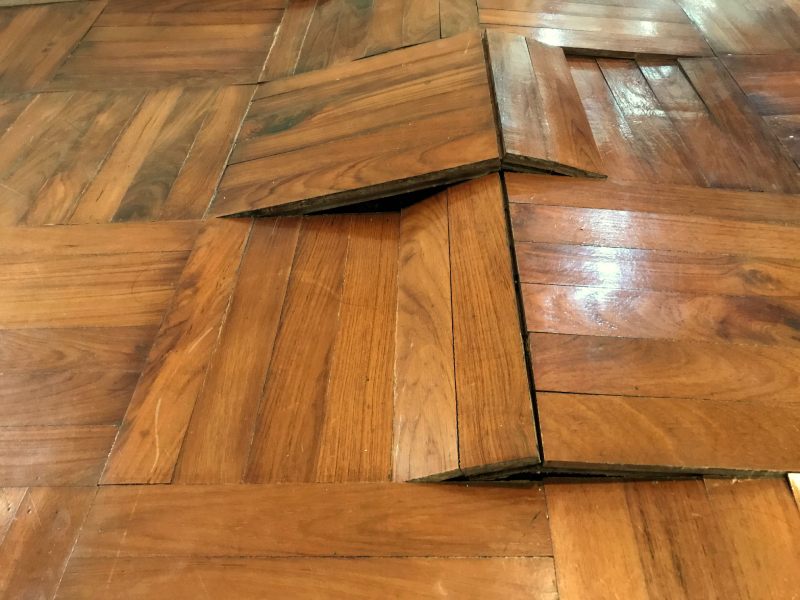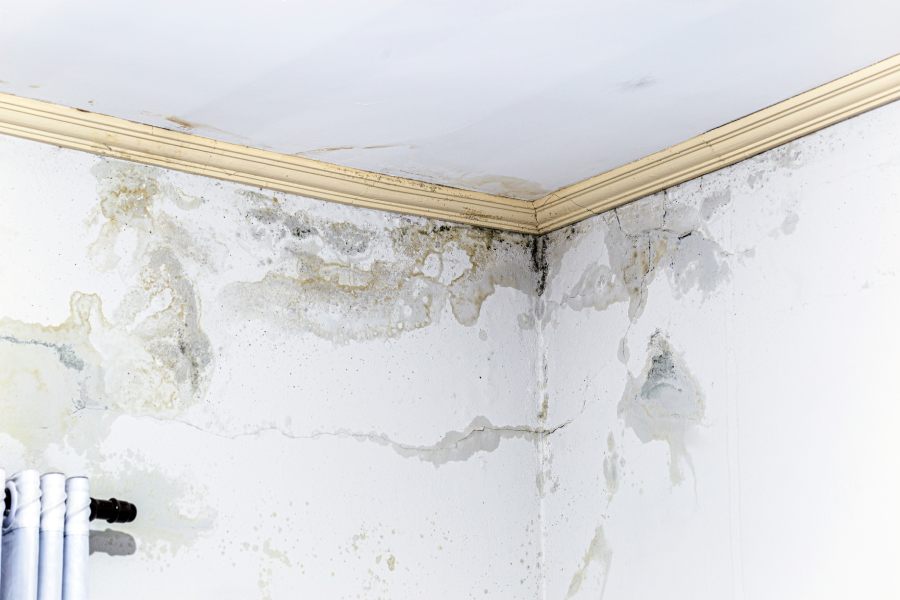Water damage can be your worst nightmare, silently wreaking havoc on properties and possessions. Whether caused by natural disasters, plumbing failures, or simple oversights, the consequences of water infiltration can be far-reaching and costly. But what does water damage look like?
In this article, we’ll explore the telltale signs of water damage, empowering you to identify potential problems before they escalate into major headaches. By understanding what to look for, you’ll be better equipped to protect your home and maintain its value for years.
Let’s get started!

What Does Water Damage Look Like?
Water damage can manifest in various ways throughout your home, particularly in walls, floors, and ceilings. Several key signs can identify water damage.
Look for yellowish-brown stains on ceilings, walls, or floors, and watch for warped or buckled surfaces like wood or drywall. Peeling or bubbling paint, mold growth, and musty odors are also strong indicators of moisture issues.
Recognizing these signs early can help you address the problem before it leads to more serious damage. To better understand, we’ve provided additional details below.
Visible signs of water damage on the walls
Stains, water rings, and paint damage
Water damage on walls can present as stains or discoloration, shifting from yellow to brown and potentially expanding over time. Fresh stains may feel damp, while older ones are dry but still noticeable. Another telltale sign is water rings, which feature darker edges and lighter centers, suggesting repeated exposure and offering clues about the leak’s origin.
Bubbling or peeling paint is also a strong indicator of trapped water behind the surface, leading to unsightly damage and potentially exposing underlying materials. Together, these signs help diagnose and address water damage effectively.
Structural damage and mold growth
Water can undermine the structural integrity of walls, causing drywall to soften or warp. This often results in a spongy texture or visible bulges, which may necessitate professional intervention.
Additionally, prolonged exposure to moisture can lead to mold growth. Mold, which appears as dark spots or fuzzy patches in various colors, thrives in damp, dark environments and typically emits a musty odor. This indicates an urgent need to address both mold and moisture issues promptly.
Signs of water damage in floors
Floors can reveal distinct signs of water damage. Wooden floors may exhibit warping or buckling, which looks like waves or ripples in the wood or sections of flooring lifting. The extent of the damage depends on how long the floor has been exposed to water.
Water can also render floors spongy and soft, a common issue in wood and laminate flooring. As the material absorbs moisture, it loses its structural integrity, resulting in an unstable feel underfoot. This instability can be dangerous and often signifies damage beyond what is immediately visible.
For tiled floors, water damage can lead to loose or cracked tiles. The grout between tiles might also exhibit signs of damage. Even minor cracks can allow more water to seep in, potentially leading to more significant issues over time.

Indication of water damage in ceilings
Ceilings are often the first place to show clear signs of water damage. Water stains, typically circular or irregularly shaped and in colors ranging from light brown to gray, can indicate the extent of the issue. Larger or spreading stains usually suggest a more severe problem.
A sagging or bulging ceiling, on the other hand, signals significant water damage. This condition arises when the ceiling material absorbs excessive moisture, causing it to droop or bulge downward.
Such a situation is dangerous and requires immediate attention to avoid the risk of collapse. For that purpose, our technicians are extensively trained and certified, providing you with top-notch care and expertise for every job.
Moreover, peeling or bubbling paint on the ceiling often precedes visible water stains. This occurs when water gets trapped between the paint and the ceiling surface. Catching these early signs can help you address water problems before they become more severe.
Hidden Signs of Water Damage
Water damage isn’t always obvious, but knowing how to check for water damage is crucial for homeowners. Simply put, detecting water damage early can save you from costly repairs and health issues. Here are some subtle signs to watch for:
Odor and sound indicators of water damage
A musty odor, often reminiscent of wet cardboard or mold, can indicate hidden water damage, especially in enclosed spaces or near walls. This smell may vary with humidity and is usually more pronounced in basements, bathrooms, or crawl spaces.
If you detect a sewage-like smell, it may signal severe water issues, while mildew odors, commonly found in laundry rooms or closets, suggest persistent moisture problems. The sound of dripping or rushing water in walls, ceilings, or floors when no taps are in use can also indicate leaks, requiring prompt attention to prevent further damage.
These odors and sounds can serve as early warnings of long-term water buildup. Ignoring them could result in more significant structural damage over time. So, we advise you to address unusual sounds and smells to avoid escalating problems.
Visual and environmental signs of water damage
Visible signs of water infiltration include cracked caulking, discolored grout, and loose tiles, especially in kitchens and bathrooms. Warped or swollen cabinets and rising utility bills may also point to hidden leaks or water damage.
Furthermore, high humidity and condensation on windows can indicate poor air quality linked to water-related issues, while indoor allergy-like symptoms further highlight these problems. Over time, if left unchecked, water damage can affect your home’s foundation and lead to costly mold remediation.
So, we advise you to pay attention to changes in the texture or appearance of walls and floors. Tackling small repairs now can prevent much larger expenses down the road.

Conclusion
Identifying the signs of water damage is essential for preserving your home’s integrity and value. So, what does water damage look like? It can appear in several ways. Visible signs include stains, warping, and mold growth on walls, floors, and ceilings.
On the other hand, hidden indicators might be musty odors, unusual sounds, and higher utility bills. Maintaining your home’s integrity is crucial, and understanding water damage is a key step in safeguarding your property.
For expert advice and solutions tailored to your needs, contact us today. Let us help you keep your home safe and sound—reach out now to schedule a consultation!
